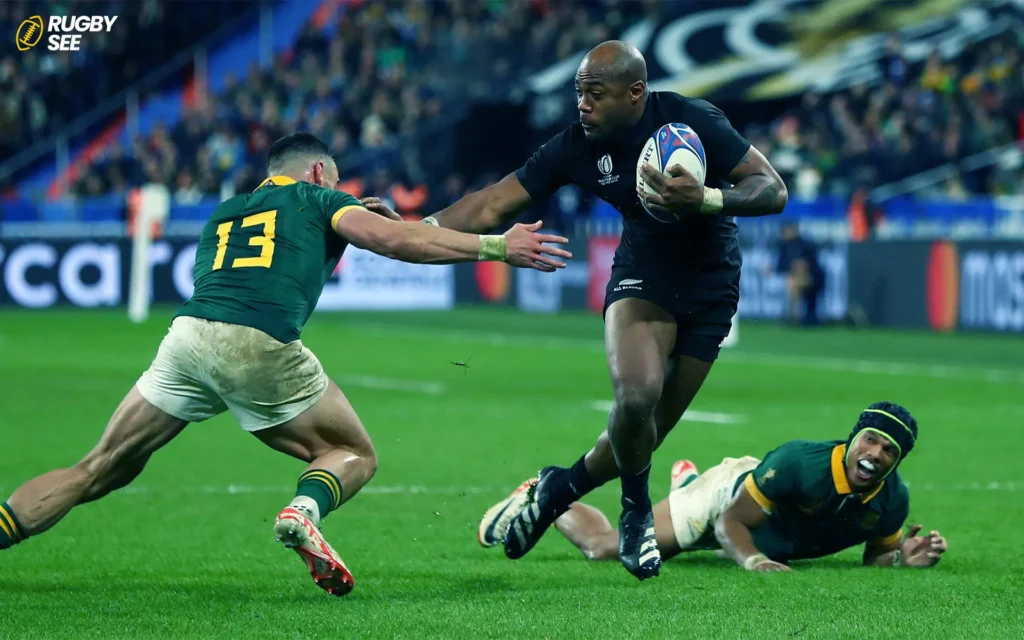Rugby, a sport with important roots and a rich history, is very popular in certain regions of the world. However, its global reach and fan base seem limited compared to sports like soccer or American football. This article from Rugbysee examines the factors that contribute to rugby’s relative obscurity on the world stage, examining culture-building, media coverage, and the issues that have shaped its popularity.
Cultural Influence and Historical Context
One of the primary reasons for rugby’s varying popularity is the cultural and historical context within which it has developed. Originating in England in the 19th century, rugby quickly became a staple of British schools and universities, symbolizing strength, discipline, and camaraderie. However, its spread was closely tied to the British Empire, limiting its early exposure to countries within this colonial sphere.
The Impact of Colonial History
In nations where British influence was strong, such as Australia, New Zealand, and South Africa, rugby took root and flourished. Conversely, in countries without this colonial connection, rugby struggled to establish a foothold, overshadowed by indigenous sports or other forms of football that arrived earlier or were more easily accessible.
Media Coverage and Commercialization
Media coverage plays a crucial role in popularizing sports, and rugby has historically received less global media attention than sports like soccer, basketball, or American football. This discrepancy in coverage can be attributed to several factors:

Limited Appeal to Broadcasters
Rugby’s perceived complexity and the existence of different versions of the game (rugby union vs. rugby league) can confuse newcomers, making it less attractive to broadcasters seeking a broad, global audience. Furthermore, the sport’s most prestigious tournaments, such as the Rugby World Cup, occur only every four years, reducing regular international media exposure.
Commercialization Challenges
Compared to other major sports, rugby has faced challenges in commercialization. The sport’s governing bodies have been cautious in allowing sponsorships and advertisements to infiltrate the game, aiming to preserve its traditional values. While commendable, this approach has limited rugby’s ability to generate revenue and invest in global marketing efforts.
Accessibility and Infrastructure
For a sport to grow in popularity, it must be accessible to players and fans alike. Rugby, however, requires a specific set of physical and infrastructural elements that can be barriers to entry.

Equipment and Facilities
Rugby demands more than just a ball and open space. The physical nature of the sport necessitates proper training facilities, equipment, and coaching, resources that are scarce or expensive in many parts of the world. This limitation has hindered the grassroots development of rugby outside its traditional strongholds and if you want to know about that how much rugby is popular in India read Exploring the Low Popularity of Rugby in India.
The Learning Curve
Rugby is known for its complex rules and physical demands, which can intimidate newcomers. The sport’s learning curve is steep compared to more straightforward games like soccer, where the basic premise is easily grasped by people of all ages and backgrounds.
The Globalization Effort
Despite these challenges, efforts to globalize rugby have intensified in recent years. The inclusion of rugby sevens in the Olympics is a significant step forward, offering a faster-paced, more accessible version of the game to a global audience. World Rugby, the sport’s governing body, has also increased its investment in developing rugby in non-traditional markets, aiming to build a more inclusive and diverse rugby community.
Building a More Inclusive Sport
Initiatives to make rugby more inclusive and accessible are underway, targeting countries and communities where rugby is less known. These include grassroots programs focused on education, community engagement, and infrastructure development, all designed to lower the barriers to entry and foster a global rugby culture.
Grassroots Development: Sowing the Seeds for Rugby’s Growth
A pivotal aspect of increasing rugby’s popularity is the investment in grassroots development. By introducing rugby at a young age, organizations can cultivate a passion for the sport that transcends generations. Schools, clubs, and community centers around the world are increasingly incorporating rugby into their physical education programs, aiming to familiarize children with the sport from a young age. This early exposure is crucial for developing a lasting interest and understanding of the game.

Community Engagement and Accessibility
Engaging with communities to make rugby more accessible is another crucial step. This includes offering free clinics, workshops, and rugby introduction days, where people can learn the basics of the game in a fun, inclusive environment. Making the sport more accessible also involves addressing the cost barriers associated with equipment and participation fees, ensuring that rugby is affordable for all interested individuals.
The Role of Digital Media in Popularizing Rugby
In today’s digital age, social media and online platforms play a significant role in shaping sports’ popularity. Rugby’s governing bodies and fan communities have begun leveraging these tools to reach a wider audience, sharing highlights, tutorials, and inspirational stories from the rugby world.
Enhancing Visibility Through Online Platforms
Platforms like YouTube, Instagram, and TikTok offer unique opportunities to showcase the excitement and values of rugby to a global audience. By creating content that highlights the sport’s intensity, camaraderie, and global competitions like the Rugby World Cup, stakeholders can attract interest from those who might not have access to traditional rugby broadcasting.
Engaging with Younger Audiences
To capture the interest of younger generations, rugby’s presence in the digital realm must be engaging and interactive. This includes not only sharing content but also creating opportunities for fans to interact with players and teams, participate in virtual rugby experiences, and contribute to the sport’s growing online community.
Future Prospects: Rugby’s Path to Global Recognition
As rugby continues to navigate the challenges of global popularity, its future prospects seem promising. The sport’s inclusion in global events like the Olympics and its growing presence in non-traditional rugby nations are positive signs of its expanding reach.

Embracing Innovation and Inclusivity
For rugby to thrive on the global stage, embracing innovation in how the sport is played, presented, and marketed is crucial. This includes experimenting with formats like rugby sevens, which offer a faster-paced, more accessible version of the game, and promoting inclusivity by highlighting women’s rugby and youth programs.
Building Global Partnerships
Strengthening partnerships with international sports organizations, sponsors, and broadcasters will also be key to rugby’s growth. These collaborations can enhance the sport’s visibility, provide necessary resources for development programs, and ensure rugby’s place in the international sports calendar.
While rugby may not boast the global popularity of some other sports, it is a game rich in history, tradition, and values. The challenges it faces in becoming more universally embraced are significant but not insurmountable. With concerted efforts to demystify the game, improve accessibility, and leverage modern media platforms for broader coverage, rugby stands on the cusp of a new era of global recognition.
The path to increasing rugby’s popularity is complex and multifaceted, involving cultural adaptation, strategic marketing, and grassroots development. However, the sport’s core of teamwork, respect, and endurance resonates universally. As rugby continues to evolve and adapt to the global sports landscape, it holds the potential to capture the hearts of a wider audience, celebrating its unique spirit on a larger stage.










